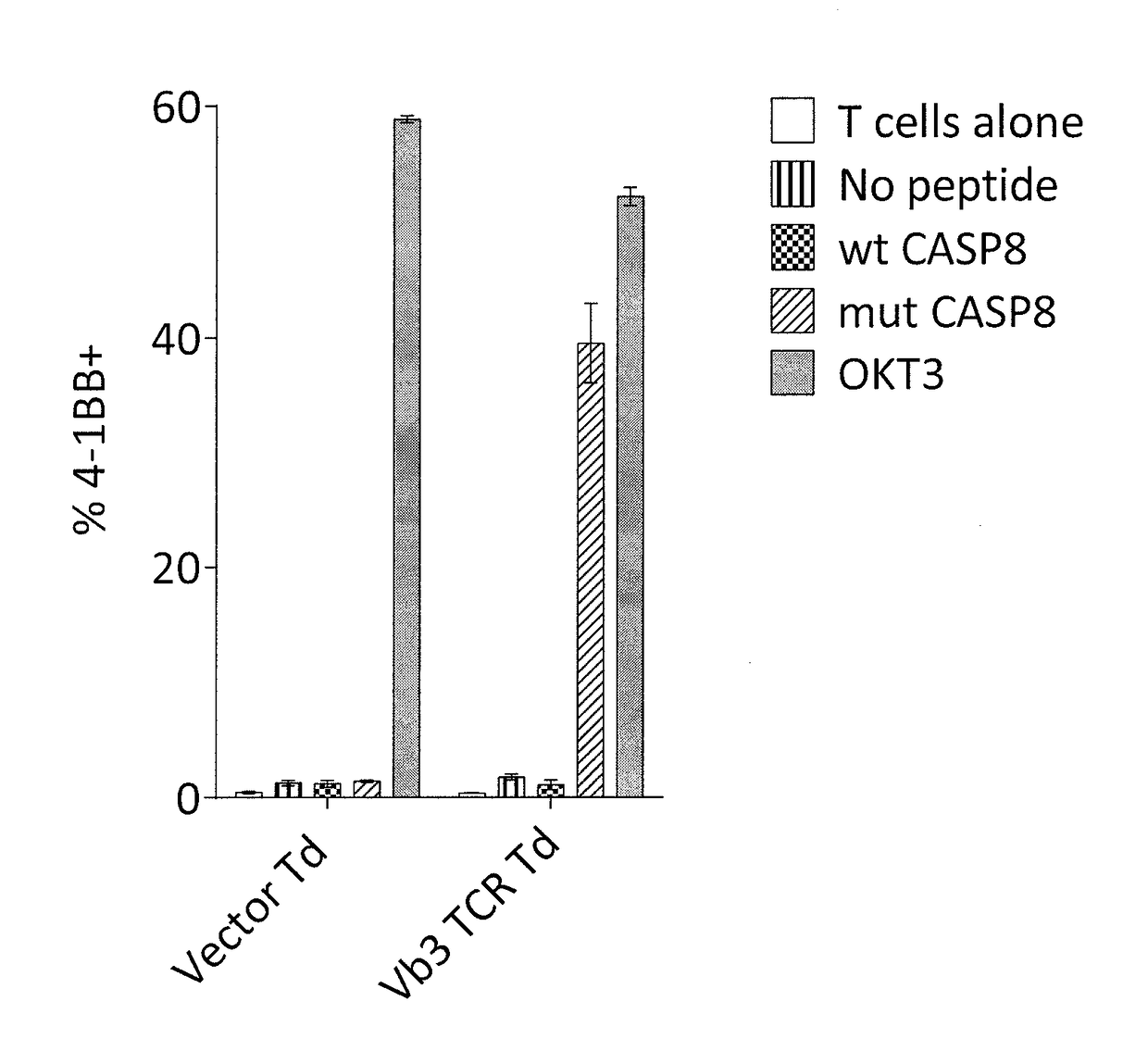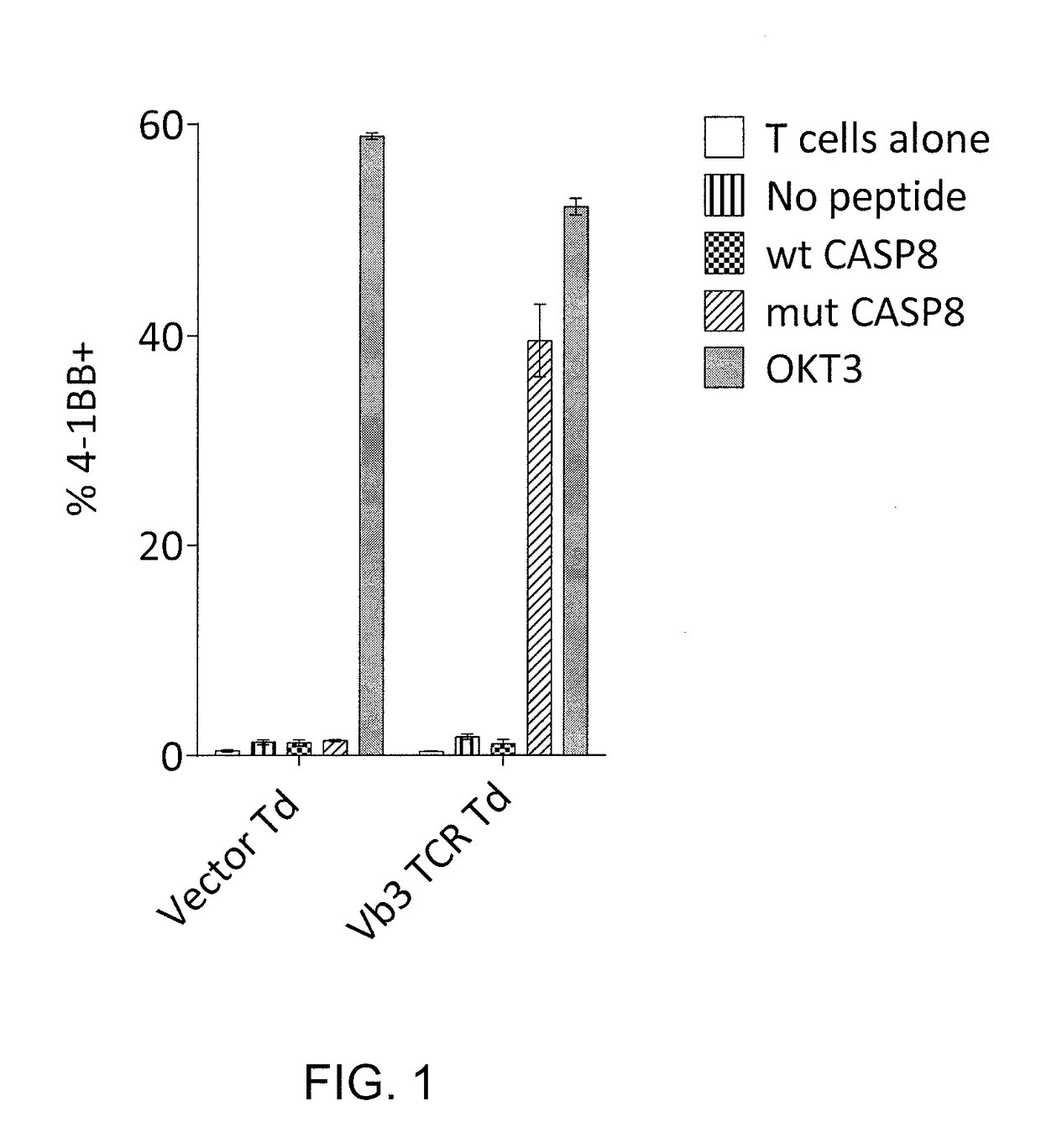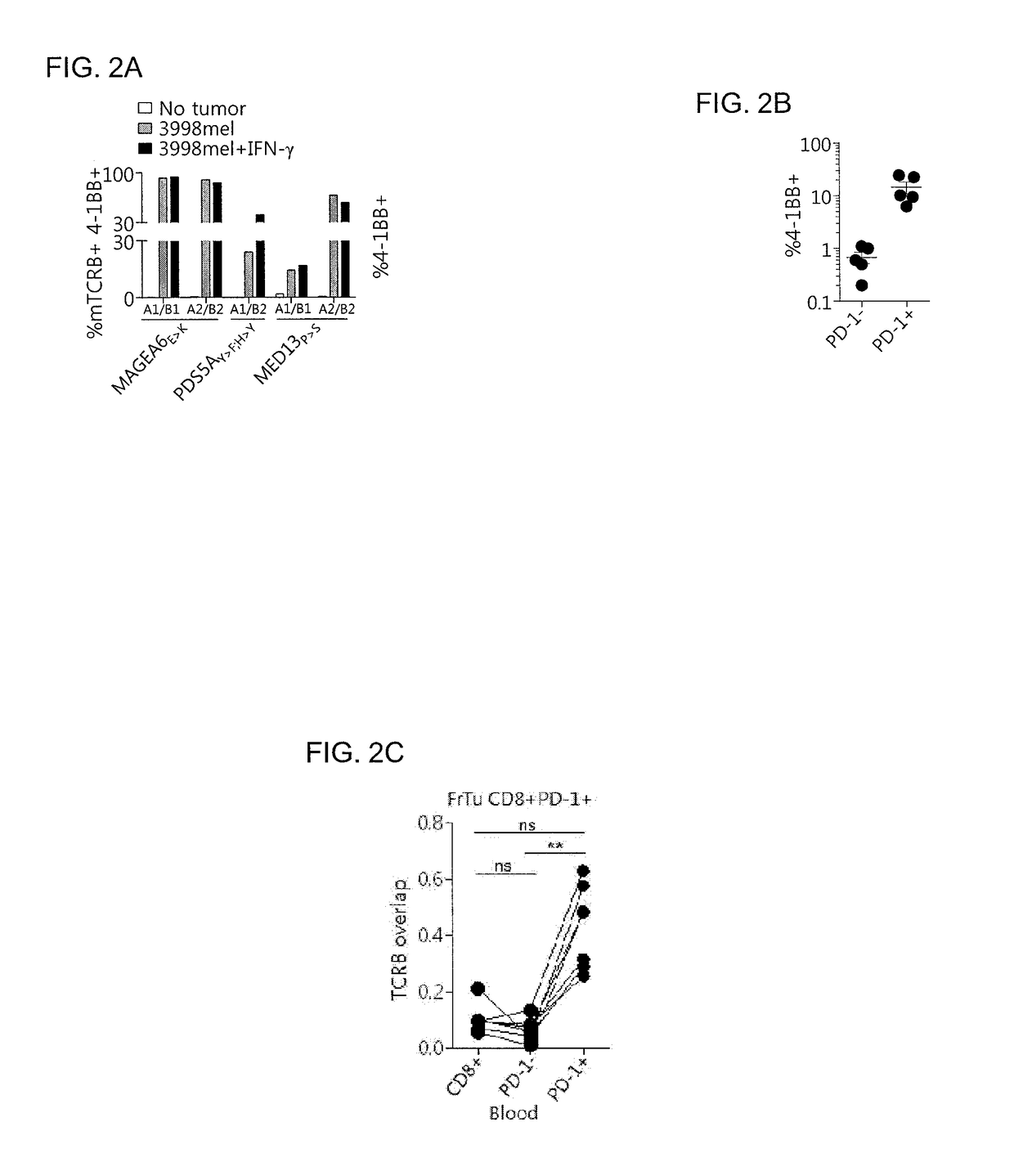Methods of isolating t cells and t cell receptors having antigenic specificity for a cancer-specific mutation from peripheral blood
a technology of t cells and receptors, which is applied in the field of isolating t cells and t cell receptors having antigenic specificity for a cancer-specific mutation from peripheral blood, can solve the problems that t cells and tcrs that specifically recognize cancer antigens are difficult to identify and/or isolate from patients, and hinder the successful use of act for the widespread treatment of cancer and other diseases
- Summary
- Abstract
- Description
- Claims
- Application Information
AI Technical Summary
Benefits of technology
Problems solved by technology
Method used
Image
Examples
example 1
[0122]This example demonstrates the expression of PD-1 and TIM-3 in the CD8+ cell population in the peripheral blood of a melanoma patient and the purity of the cells separated according to PD-1 and TIM-3.
[0123]PBMC from melanoma patient 3713 were rested overnight in the absence of IL-2, stained with antibodies, and sorted according to expression of CD8 and CD3 by FACS. Then, the CD3+CD8+ cells were sorted according to expression of PD-1 and TIM-3 by FACS. The gates of the stained samples were set based on the isotype control. The frequency of the CD8+ PBMC populations expressing each of the markers is indicated in Table 1 below.
TABLE 1Percentage of cells expressingPopulationPhenotypeindicated phenotypeNon-specificTIM-3+PD-1+0.1StainingTIM-3−PD-1+4.4TIM-3+PD-1−1.0TIM-3−PD-1−94.5PD-1−TIM-3+PD-1+0.0TIM-3−PD-1+0.0TIM-3+PD-1−2.0TIM-3−PD-1−98.0PD-1+TIM-3+PD-1+14.3TIM-3−PD-1+77.6TIM-3+PD-1−2.0TIM-3−PD-1−6.1PD-1hiTIM-3+PD-1+3.3TIM-3−PD-1+93.3TIM-3+PD-1−0.0TIM-3−PD-1−3.3TIM-3+TIM-3+PD-1+1.9...
example 2
[0124]This example demonstrates that CD8+PD-1+, CD8+PD-1+TIM-3−, and CD8+PD-1+TIM-3+ cell populations, but not bulk CD8+, CD8+PD-1−, CD8+TIM-3−, or CD8+TIM-3 + cell populations, isolated from peripheral blood recognize target cells pulsed with unique, patient-specific mutated epitopes.
[0125]Pheresis from a melanoma patient (3713) was thawed and rested overnight in the absence of cytokines. CD8+ cells were sorted according to PD-1 and TIM-3 expression into the following populations: CD8+ bulk, CD8+PD-1−, CD8+PD-1+, CD8+TIM-3−, CD8+TIM-3+, CD8+PD-1+TIM-3−, and CD8+PD-1+TIM-3+. The numbers of the sorted cells were expanded in vitro for 15 days. On day 15, the cells were washed and co-cultured with target autologous B cells pulsed with wild type (wt) or mutated (mut) epitopes known to be recognized by the patient's tumor-infiltrating lymphocytes at a ratio of 2×104 effector cells: 1×105B cells. T cells were also co-cultured with the autologous tumor cell line (TC3713) in the absence or ...
example 3
[0127]This example demonstrates that CD8+PD-1+, CD8+PD-1+TIM-3−, CD8+PD-1+TIM-3+, and CD8+PD-1+CD27hi cell populations, but not bulk CD8+, CD8+TIM-3−, CD8+TIM-3+, CD8+PD-1-CD27hi, or CD8+PD-1− cell populations, isolated from peripheral blood recognize target cells electroporated with RNA encoding unique, patient-specific mutated epitopes.
[0128]Pheresis from melanoma patient 3903 was thawed and rested overnight in the absence of cytokines. CD8+ cells were enriched by bead separation and then sorted according to PD-1 and TIM-3 expression into the following populations: CD8+ bulk, CD8+PD-1−, CD8+PD-1+, CD8+TIM-3−, CD8+TIM-3+, CD8+PD-1+TIM-3−, CD8+PD-1+TIM-3+, CD8+PD-1-CD27hi, and CD8+PD-1+CD27hi. The numbers of sorted cells were expanded in vitro for 15 days. On day 15, the cells were washed and co-cultured with target autologous dendritic cells electroporated with RNA encoding mutated tandem minigenes (TMGs 1-26; each encoding multiple 25mers containing a mutation flanked by the endog...
PUM
| Property | Measurement | Unit |
|---|---|---|
| concentration | aaaaa | aaaaa |
| concentration | aaaaa | aaaaa |
| concentration | aaaaa | aaaaa |
Abstract
Description
Claims
Application Information
 Login to View More
Login to View More - R&D
- Intellectual Property
- Life Sciences
- Materials
- Tech Scout
- Unparalleled Data Quality
- Higher Quality Content
- 60% Fewer Hallucinations
Browse by: Latest US Patents, China's latest patents, Technical Efficacy Thesaurus, Application Domain, Technology Topic, Popular Technical Reports.
© 2025 PatSnap. All rights reserved.Legal|Privacy policy|Modern Slavery Act Transparency Statement|Sitemap|About US| Contact US: help@patsnap.com



